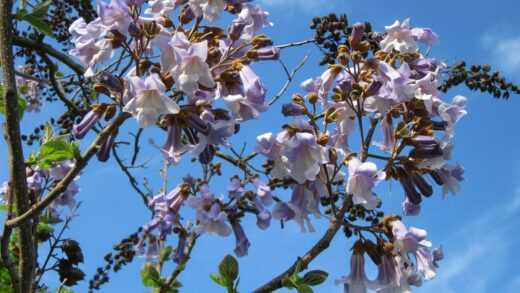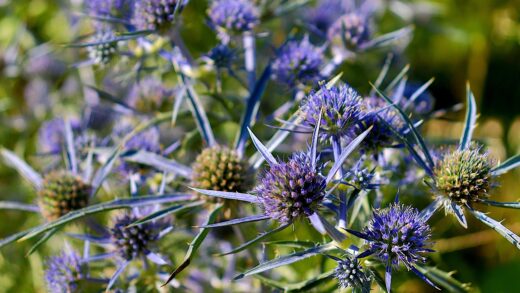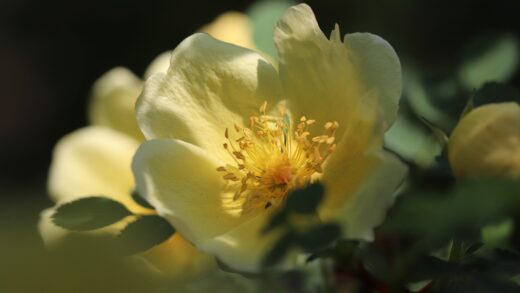The successful establishment of glory-of-the-snow in the garden begins with proper planting techniques and an understanding of their propagation methods. These resilient little bulbs are among the earliest to bloom, creating a carpet of color in early spring. The key to a spectacular display lies in planting healthy bulbs at the right time of year and in a location that meets their specific needs. Proper planting ensures the bulbs develop strong root systems before winter, setting the stage for a vibrant floral show. Furthermore, understanding how these plants propagate, both through bulb offsets and by seed, allows the gardener to actively expand their collection or simply to appreciate the natural spread of these charming flowers over time.
Planting glory-of-the-snow is a straightforward process best undertaken in the autumn. This timing allows the bulbs sufficient time to establish roots in the cool, moist soil before the ground freezes, which is a critical step for their survival and subsequent spring growth. The selection of high-quality, firm, and blemish-free bulbs is the first and most important step in this process. Healthy bulbs have a much higher chance of thriving and producing a robust display of flowers in their first season.
Once the ideal bulbs are acquired, attention must turn to the planting site itself. These plants are not overly demanding, but they flourish in well-drained soil that is rich in organic matter. A location that receives ample sun in the early spring, such as beneath deciduous trees, is perfect. Careful preparation of the planting area by loosening the soil and incorporating amendments like compost will significantly improve the long-term performance of the bulbs, encouraging them to multiply and naturalize.
Propagation is the method by which these plants increase in number, and glory-of-the-snow employ two primary strategies: vegetative propagation through the production of small offset bulbs, and sexual reproduction through seeds. Gardeners can harness both of these methods to increase their stock. Division of established clumps is the quickest and most common method, while growing from seed offers the potential for genetic variation and the satisfaction of nurturing plants from the very beginning of their life cycle.
Selecting the right bulbs and site
The foundation of a successful glory-of-the-snow display is the quality of the bulbs themselves. When purchasing bulbs, look for those that are firm, plump, and heavy for their size. Avoid any bulbs that feel soft, are visibly moldy, or have significant cuts or bruises, as these are signs of disease or damage that will likely lead to poor performance or failure to grow. Larger bulbs generally contain more stored energy and will produce more robust plants and a greater number of flowers in their first year.
Choosing the correct planting site is equally crucial for the long-term success of the bulbs. Glory-of-the-snow perform best in a location that provides full sun or light, dappled shade during their early spring growing season. The ideal spot is often under the canopy of deciduous trees and shrubs. Here, they will receive all the sunlight they need to flower and store energy before the overhead leaves emerge and cast dense shade. This mimics their natural woodland habitat and is a key factor in their ability to thrive.
The soil in the chosen location must be well-draining. Chionodoxa bulbs are susceptible to rot if they sit in waterlogged soil, especially during their summer dormancy. To assess drainage, observe the area after a heavy rain; if water puddles and remains for several hours, the drainage is poor. To remedy this, heavy clay soils can be amended with organic materials like compost, leaf mold, or well-rotted manure, as well as inorganic materials like coarse sand or fine grit to improve the soil structure and allow excess water to escape.
Consider the aesthetic placement and the plant’s growth habit when selecting the final spot. Glory-of-the-snow look most natural and impactful when planted in large, informal groups, drifts, or swathes, rather than in formal rows. They are perfectly suited for rock gardens, the front of perennial borders, or for naturalizing in a lawn. When planting in a lawn, choose an area that you can refrain from mowing until late spring, allowing the bulb foliage ample time to die back naturally.
The ideal planting process
The optimal time to plant glory-of-the-snow bulbs is during the autumn, typically from September to November, depending on the local climate. The goal is to plant them about four to six weeks before the ground is expected to freeze solid. This period provides the necessary window for the bulbs to develop a healthy root system, which anchors them in the soil and prepares them for vigorous growth in the spring. Planting too early can risk premature sprouting, while planting too late may not allow sufficient time for root establishment.
To begin the planting process, prepare the soil by digging to a depth of at least six inches and loosening it thoroughly. This is the best time to incorporate any necessary amendments, such as compost to add fertility or grit to improve drainage. A small amount of a balanced, slow-release bulb fertilizer or bone meal can be mixed into the bottom of the planting area to provide essential nutrients for the developing roots. This initial soil preparation creates a welcoming environment for the bulbs to establish themselves quickly.
The general rule for planting depth is to place the bulb at a depth that is two to three times its own height. For the small bulbs of Chionodoxa, this typically translates to a depth of about three to four inches. The bulbs should be placed with their pointed end facing upwards, as this is where the shoot will emerge. If it is difficult to determine the top from the bottom, planting the bulb on its side is a safe alternative; the plant will naturally find its way towards the surface.
For a natural-looking display, space the bulbs approximately two to three inches apart. Planting them in clusters of a dozen or more creates a much more visually appealing effect than planting them singly. After placing the bulbs in their holes, backfill with the prepared soil, gently firming it down to eliminate any large air pockets. The final step is to water the area thoroughly. This initial watering helps to settle the soil around the bulbs and provides the moisture needed to stimulate root growth.
Propagation through bulb offsets
Vegetative propagation by means of offsets is the most common and reliable way that glory-of-the-snow multiplies, and it is the easiest method for a gardener to utilize for increasing their stock. Over time, a mature Chionodoxa bulb will produce small, new bulbs, known as offsets or bulblets, that form around its base. These offsets are genetically identical to the parent plant. As these offsets grow and mature, the planting becomes a dense, multi-flowered clump.
After several years, these clumps can become overcrowded, leading to competition for resources and a subsequent reduction in flowering. This is the ideal time for the gardener to intervene and divide the clumps. The best time to perform this task is in late summer or early autumn when the bulbs are dormant. This timing minimizes stress on the plants and allows the newly separated bulbs to establish themselves before winter.
The process of division is straightforward. Use a garden fork or spade to carefully lift the entire clump out of the ground, being sure to dig wide and deep enough to avoid spearing the bulbs. Once the clump is lifted, gently shake or crumble the soil away from the bulbs. The individual bulbs and offsets can then be carefully teased apart by hand. Discard any bulbs that are soft or show signs of disease, keeping only the healthy, firm ones for replanting.
The newly separated bulbs and larger offsets can be replanted immediately in a new, prepared location or back into the same area after amending the soil with compost. Plant them at the same depth and spacing as you would with new bulbs, approximately three inches deep and three inches apart. Smaller offsets can also be planted, but they may take a year or two to reach flowering size. Water the newly planted bulbs well to encourage the initiation of new root growth.
Growing from seed: a patient approach
Propagating glory-of-the-snow from seed is a rewarding, albeit slower, method of increasing the number of plants. This method also introduces genetic variability, which can result in subtle variations in flower color and form. The plants will often self-sow in ideal garden conditions, with ants helping to disperse the seeds, leading to the gradual naturalization of a colony. A gardener can also collect and sow the seeds intentionally.
Seed should be collected as soon as the pods have turned from green to a yellowish-brown and begin to split open. It is important to harvest them at this stage before they are fully dispersed. The seeds of Chionodoxa, like many spring ephemerals, have a short period of viability and require a period of warmth followed by a period of cold, moist conditions to germinate. Therefore, it is best to sow the seeds immediately after collection in late spring or early summer.
The seeds can be sown in pots or seed trays filled with a well-draining, sterile seed-starting mix. Lightly cover the seeds with a fine layer of the mix or with horticultural grit. The pots should then be kept in a warm, sheltered location, such as a cold frame or a protected spot outdoors, throughout the summer. Keep the soil consistently moist but not wet. This warm period is necessary to break the seed’s initial dormancy.
For germination to occur, the seeds require a period of cold stratification. Over the winter, the pots should be left outdoors, exposed to the natural cold and moisture. This cold period mimics the natural conditions the seeds would experience and is essential for triggering germination in the spring. As the weather warms, seedlings will emerge. These young plants are delicate and should be grown on in their pots for at least one or two seasons before they are large enough to be planted out into the garden. It typically takes three to four years for a plant grown from seed to reach flowering size.
Naturalizing in the landscape
Glory-of-the-snow are exceptionally well-suited for naturalizing, the process of establishing plants in an informal setting where they can grow and spread as they would in the wild. Their ability to multiply via both offsets and self-seeding allows them to form beautiful, ever-expanding carpets of color over the years. The key to successful naturalizing is to plant them in a location where they will be left largely undisturbed to complete their life cycle each year.
Woodland gardens and the areas under deciduous trees are prime locations for naturalizing. The conditions in these areas in early spring—ample sunlight, moist soil, and a natural mulch of leaf litter—are perfect for Chionodoxa. Plant the bulbs in large, irregular drifts rather than in neat patterns. To achieve a random, natural look, you can gently toss handfuls of bulbs onto the prepared soil and plant them where they land. This method creates a much more organic and pleasing effect than structured planting.
Lawns are another popular area for naturalizing these early spring bulbs. They will often flower and their foliage will begin to ripen before the first mowing of the season is necessary. It is crucial to allow the foliage to die back completely before mowing over the area, as cutting it prematurely will prevent the bulbs from storing enough energy to flower the following year. This typically means holding off on mowing that specific section of the lawn until late May or early June.
Rock gardens also provide an excellent setting for naturalizing Chionodoxa. The sharp drainage provided by the gritty soil in a rock garden is ideal for preventing bulb rot, and their small stature is perfectly in scale with other alpine plants. When planted in the crevices between rocks, they create a stunning visual effect as the vibrant blue flowers emerge from the stony landscape. In any naturalized setting, the goal is to create a self-sustaining population that becomes a permanent and cherished feature of the spring garden.




















